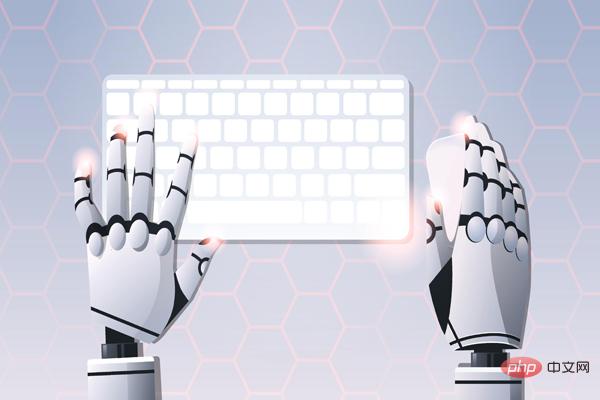Home >Technology peripherals >AI >Artificial Intelligence: Three ways the pandemic is accelerating its adoption
Artificial Intelligence: Three ways the pandemic is accelerating its adoption
- PHPzforward
- 2023-04-12 08:52:08913browse
Over the past few years, the need for enterprises to quickly create new business models and marketing channels has accelerated the adoption of artificial intelligence. This is especially true in healthcare, where data analytics has accelerated the development of COVID-19 vaccines. In consumer packaged goods, Harvard Business Review reported that Frito-Lay created an e-commerce platform, Snacks.com, in just 30 days.

The pandemic has also accelerated the adoption of artificial intelligence in education, as schools were forced to go online overnight study. Whenever possible, the world will move to “contactless” transactions, revolutionizing the banking industry.
Three technological developments during the COVID-19 pandemic have accelerated the adoption of artificial intelligence:
- Continuously cheap computing power and storage
- New data architecture
- Availability of New Data Sources
The Pros and Cons of Artificial Intelligence Development
Here are the following to understand the impact of these developments on IT Pros and cons of being a leader.
1. Continued Cheap Computing Power
Even 60 years after Moore’s Law, computing power is still Keep improving, with new chips from companies like NVidia, more powerful machines and more processing power. AIImpacts reports that "over the past 25 years, available computing power per dollar has likely increased tenfold (measured as FLOPS or MIPS) approximately every four years." However, over the past 6-8 years, this rate has Slowed down.
Benefits: Do more with less
Cheap computing gives IT leaders more options, allowing them to do more with less.
Disadvantages: Too many choices can lead to a waste of time and money
Consider big data. With cheap computing, IT professionals want to harness its power. People want to start ingesting and analyzing all available data to gain better insights, analysis, and decisions.
#But if you're not careful, you can end up with a huge amount of computing power and not enough for real business applications.
#As network, storage and computing costs fall, humans tend to use them more. But they don’t necessarily bring business value to everything.
2. New data architecture
Before the COVID-19 epidemic, “data warehouse” and “data lake” These two terms are standard for this. But new data architectures like "data structures" and "data grids" are almost non-existent. DataFabric supports AI adoption as it enables enterprises to use data to maximize their value chain by automating data discovery, governance and consumption. No matter where the data resides, businesses can deliver the right data at the right time.
Pros: IT leaders will have the opportunity to rethink data models and data governance
It provides a reverse Opportunities for centralized data repositories or data lakes trend. This could mean more edge computing and data available where it's most relevant. These advances result in the appropriate data being automatically used for decision-making – which is crucial for AI to be actionable.
Cons: Not understanding business needs
IT leaders need to understand the business and AI aspects of new data architectures . If they don’t know what each part of the business needs—including the type of data and where and how it will be used—they may not be able to create the right type of data architecture and data consumption to get the right support. IT's understanding of business requirements and the business model that goes with this data architecture is critical.
3. New Data Sources
Statista research highlights data growth: Total amount of data created, captured, copied and used globally in 2020 is 64.2 zettabytes and is expected to reach over 180 zettabytes by 2025. A May 2022 Statista research report said that "the growth is higher than previously expected due to increased demand due to the new crown epidemic." Big data sources include media, cloud computing, Internet of Things, networks and databases.
Pros: Data is powerful
Every decision and transaction can be traced back to the data source. IT leaders are empowered if they can use AIOps/MLOps to zero in on data sources for analysis and decision-making. The right data can provide instant business analysis and provide deep insights for predictive analytics.
Disadvantages: How do you know what data to use?
Surrounded by data from the Internet of Things, edge computing, formatted and unformatted, intelligent and incomprehensible – IT leaders are dealing with the 80/20 rule: What are the 20% of trusted data sources that provide 80% of the business value? How do you use AI/ML operations to determine trusted data sources and which data sources should be used for analysis and decision-making? Every business needs answers to these questions.
Core AI technology is evolving on its own
Artificial intelligence is becoming ubiquitous, powered by new algorithms and Powered by increasingly abundant and affordable computing power. For more than 70 years, artificial intelligence technology has been on the path of evolution. The pandemic has not accelerated the development of artificial intelligence; it has accelerated its adoption.
The above is the detailed content of Artificial Intelligence: Three ways the pandemic is accelerating its adoption. For more information, please follow other related articles on the PHP Chinese website!
Related articles
See more- Technology trends to watch in 2023
- How Artificial Intelligence is Bringing New Everyday Work to Data Center Teams
- Can artificial intelligence or automation solve the problem of low energy efficiency in buildings?
- OpenAI co-founder interviewed by Huang Renxun: GPT-4's reasoning capabilities have not yet reached expectations
- Microsoft's Bing surpasses Google in search traffic thanks to OpenAI technology

